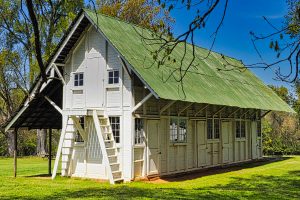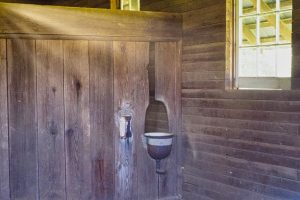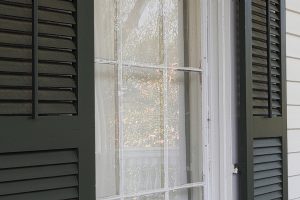Not all southern plantations look like Tara or Twelve Oaks but all have histories that span generations. That is the case with Redcliffe Plantation in Beech Island, South Carolina. We spent an entire afternoon learning about the history of the plantation as well as the families and slaves who lived there. The interpretative history tours at Redcliffe are superb. We learned a great deal!
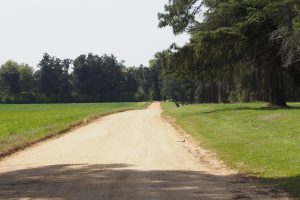
Our visit to Redcliffe Plantation took us well beyond the romance of the age and any idealized version of plantation life. The documented history of the plantation and what happened there is a stark and very real view into a plantation run by a powerful man. The complicated monster who was that man served his state and country, worked the slaves he owned and is one example of the ideology of those who supported the plantation system before, during and after Civil War days.
Redcliffe Plantation State Historic site’s mansion is a wooden 2-story house built on piers (as are most low country houses). The house was built on a hill to catch breezes with porches on all four sides of the house. At the time it was built, the Savannah River could be seen from those porches. The home was built by slaves.

The history of Redcliffe is long and includes James Henry Hammond’s lifelong fight for the institution of slavery, the histories of those enslaved, as well as the power and ambition of a man who documented his own scandalous and lewd behavior.
Redcliffe is an important site because:
- The remaining buildings are all original
- The operations of the plantation, plantings and administration of the property are detailed and were preserved in Hammond’s writings
- The families enslaved on the plantation have been fairly well documented and some descendants lived there until the 1990s!
- The history of 4 generations of owners is long and includes prestigious public service as well as diabolical behavior.
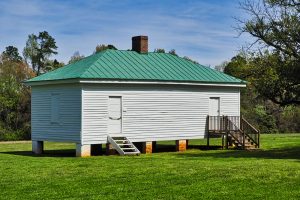
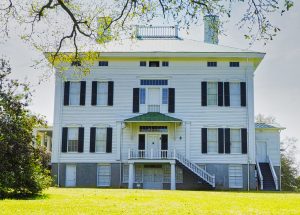
South Carolina was key to the slave industry. Records show that 40% of all people who would be enslaved in the U.S. were shipped through the port of Charleston, South Carolina. In 1860, the population of South Carolina was close to 703,000 people and some 402,000 of them were enslaved. * One of the reasons we wanted to visit Redcliffe was because original slave quarters still stand on the property today.
THE PLANTATION’S BEGINNINGS
James Henry Hammond married a 17-year old woman who came from family wealth. Through marriage, Hammond was able to amass four plantations along the Savannah River with more than 14,000 acres of tillable land.
Hammond is the man who coined the term “Cotton Is King” in a speech to the US Senate in 1858.
He said,
In all social systems there must be a class to do the menial duties to perform the drudgery of life….It constitutes the very mudsill of society. You dare not make war on cotton-no power on earth dares make war upon it. Cotton is king.**
For James Henry Hammond (1807-1864), cotton was indeed king. With the wealth and power he attained with cotton, he built the 400-acre Greek Revival Redcliffe Plantation which was completed in 1859. Three generations of his family lived at Redcliffe after his death as well as generations of enslaved African-American families like the Henleys, Goodwins, and Wigfalls.
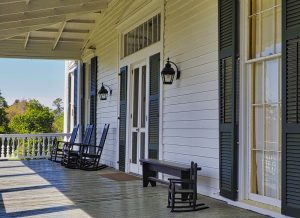
The crown jewel of his properties, Redcliffe was a non-working estate. Instead, 100 of the 400 acres were used to conduct agricultural experimentation including vineyards, orchards and to grow crops like indigo and sugar cane.
Hammond was an enormously successful cotton planter who later became a congressman, governor and senator. He spent his life defending the southern plantation system and slavery. Like Thomas Jefferson, Hammond kept extensive records on his plantings, and the administration of his plantations. Those records are treasured by historians.
|
|
|
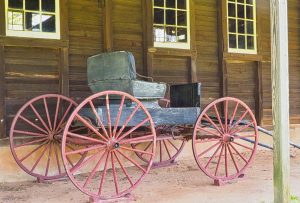 |
|
In his lifetime, Hammond enslaved at least 330 men, women and children. Between 20 and 50 of them lived at Redcliffe Plantation. The freed descendants of the five or six families of slaves on Redcliffe continued to live on the property until the late 1990s!
JAMES HENRY HAMMOND
Hammond graduated from South Carolina College in 1825. Following graduation, he taught school, wrote for a newspaper and studied law. After his marriage, he became a member of the “planter class” and was elected to the US House of Representatives and served from 1835-1836.
He was elected Governor of South Carolina and served from 1842-1844. The legislature chose him to become a US Senator in 1857 and he served until 1860. His resignation from the Senate came when South Carolina voted to secede from the Union.
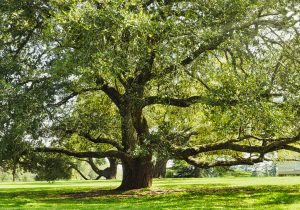
Hammond wrote numerous pro-slavery articles. He and colleagues believed that slavery was justified because of their “good” treatment of slaves as inferior beings. He wrote rules for the treatment of slaves on his plantation including how long mothers could nurse their babies, the clothing slaves wore, the food supplied to the slaves and what happened to slaves who became too old to work.
HAMMOND’S DIARIES AND HIS MONSTROUS BEHAVIOR
In 1843 Hammond’s main political supporter, his wife’s brother-in-law, Wade Hampton II (Hampton’s father had been a general in the war of 1812 and Hampton was an aide to future president Andrew Jackson), found out that Hammond had been molesting his daughters during family visits.
Subsequently, Hampton quietly dissuaded voters from voting for Hammond for Senate. He eventually made more public declarations about Hammond which derailed a portion of his political career. In those days, molested girls could not find a man willing to marry them. Hammond had sealed the fate of each of Hampton’s daughters. All four of Hampton’s daughters died unwed.
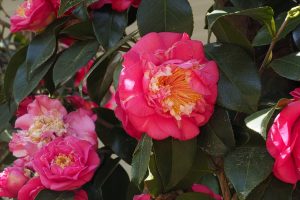
Hammond’s wife stood by him after she learned about her husband’s abuse of her nieces. However, she also found out that he had been sexually assaulting one of his slaves. He then also molested the slave’s daughter, Louisa, when she was 12 years old. Hammond’s wife told him to sell the two women or she would leave. He refused to sell the two women and his wife left with their children. He and his wife eventually reconciled when Hammond agreed to give the woman slave to his mother in-law. He also gave the now-grown Louisa (along with her children whom he had fathered) to his son (who had also been abusing Louisa).
Researchers found Hammond’s Secret and Sacred Diaries which were published in 1989. In the diaries, Hammond openly and disgustingly describes his molestation of the four teen nieces and repeated raping of the slaves.
James Henry Hammond died in 1864.
SLAVES AT REDCLIFFE PLANTATION
The Henley Family lived and worked at Redcliffe for four generations. Anthony Henley, his wife Lucy, and their five children are included on a 1859 “house” slave list for Redcliffe. Anthony’s son, Louis, worked at Redcliffe as a sharecropper during the late 19th century. Louis’ son, Dennis and his family, including sons David and Jim, along with daughters Lucy, Sarah, Kiziah, and Sophie, worked as paid employees for the Hammond and Billings families between 1925-1975.***
Information on the Henley Family going back to the 1840s can be found in the Hammond Papers at the University of South Carolina’s Caroliniana Library or by contacting Redcliffe Plantation State Historic Site (www.SouthCarolinaParks.com).
The Wigfall Family worked at Redcliffe as slaves. After emancipation, they became sharecroppers and paid domestic labor possibly through 1900. Dennis Wigfall (age 3 at the time of Emancipation) later moved to Augusta, Georgia where he and his son, Clarence, operated successful grocery stores through 1959.****
Others from 1870s-1930s were Birth Crawford and his daughter Patience, Elizabeth “Mamie” Jackson, Sidney Washington, and Lena Smith.
Alane Roundtree compiled surnames from the plantation records of James Henry Hammond of Redcliffe as well as the 1870, 1880 federal census records, for people enslaved at Silver Bluff, Cathwood, Cowden and Redcliffe from 1831-1865. Other researchers have information on the slave families also.
THE PLANTATION AFTER HAMMOND
Three more generations of the Hammond family lived at Redcliffe after James Henry Hammond’s death.
Hammond’s great grandson, John Shaw Billings, became Managing Editor of both TIME and LIFE magazines and Editorial Director of TIME, Inc. in the 1930s. He renovated the mansion in the 1930s. He donated the plantation in 1973 to the State of South Carolina and the plantation is now managed by the Department of Parks, Recreation and Tourism.
REDCLIFFE TODAY
The Greek Revival house still contains more than 4,000 artifacts from 4 generations of the Hammond family from 1859-1975 including furnishings. All tours at Redcliffe includes tours of the mansion and slave quarters.
The Visitor Center houses primary source documents, 26 historic images, and 100s of stories from plantation life.
You can wander the grounds from 9 a.m.-6 p.m. free-of-charge. Daily guided house tours are held each Thursday through Monday at 11 a.m., 1 p.m. and 3 p.m. Cost of the mansion tour is $7.50; $5.00 for children ages 6-15. Children under age 6 are free. There is also a gift shop. Geocaching is allowed.
There is a garden on site that details 120 years of gardening and agricultural history at Redcliffe. The garden is usually only open during the summer and fall.
The tours are extremely informative and the interior of the house is well worth visiting! If you visit in hot months, be aware that the house and slave quarters do not have air conditioning so be prepared!
Don’t miss the fact that an Allee’ (alley) of Magnolias was planned and planted in 1860 and is still growing. The Allee’ served as the original entrance to the plantation. However, vehicle traffic is now banned so damage isn’t done to the trees.
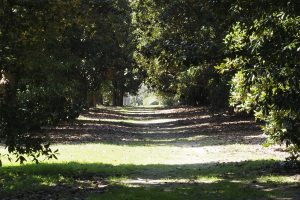
The plantation stands today as a symbol of the owner’s ambition, wealth and power as a cotton planter, congressman, governor and senator who spent his whole life defending the institution of slavery and what he viewed as his place within it. If you want a detailed, accurate visit to a plantation of the “old south,” you should visit Redcliffe Plantation!
Directions at: www.SouthCarolinaParks.com
**Wikipedia/James Henry Hammond
***www.south-carolina-plantations.com
**** ibid
